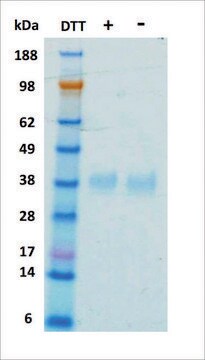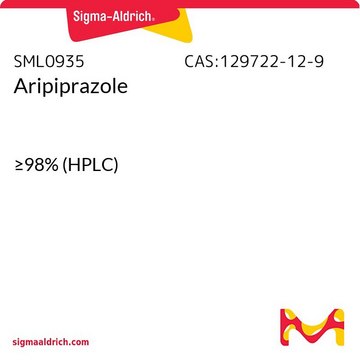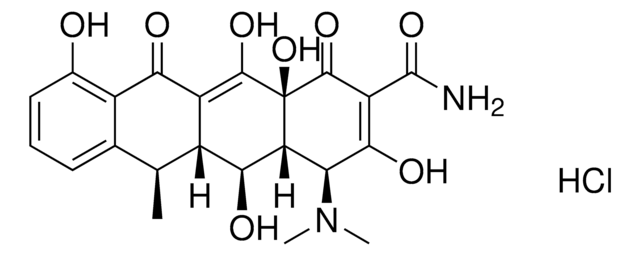E5546
Erythropoietin (EPO) human
recombinant, expressed in HEK 293 cells, suitable for cell culture
Synonyme(s) :
EPO, epoetin, hematopoietin, hemopoietin
About This Item
Produits recommandés
Produit recombinant
expressed in HEK 293 cells
Essai
≥98% (SDS-PAGE)
Forme
lyophilized powder
Puissance
≤2.5 ng/mL ED50 (measured in a cell proliferation assay using TF-1 human cells)
Technique(s)
cell culture | mammalian: suitable
Impuretés
Endotoxin, tested
Température de stockage
−20°C
Description générale
Actions biochimiques/physiologiques
EPO consists of 165 amino acids and has a high carbohydrate content, of both N-linked and O-linked types. The oligosaccharide chains are responsible for EPO production, secretion, longevity, and functioning. The biological activity of EPO depends upon two disulfide bonds, one formed between cysteine7 and cysteine160, and the other between cysteine29 and cysteine33. Thus, EPO proper folding, glycosylation and disulfide bonds formation are crucial for its function.
EPO was found to downregulate HIF-1α in the diabetic rat model. EPO helped maintaining the homeostasis of intracellular zinc in retinal cells, altered as a result of diabetes, by restoring Zinc transporter 8 (ZnT8) expression.
Code de la classe de stockage
11 - Combustible Solids
Classe de danger pour l'eau (WGK)
WGK 2
Point d'éclair (°F)
Not applicable
Point d'éclair (°C)
Not applicable
Faites votre choix parmi les versions les plus récentes :
Certificats d'analyse (COA)
Vous ne trouvez pas la bonne version ?
Si vous avez besoin d'une version particulière, vous pouvez rechercher un certificat spécifique par le numéro de lot.
Déjà en possession de ce produit ?
Retrouvez la documentation relative aux produits que vous avez récemment achetés dans la Bibliothèque de documents.
Les clients ont également consulté
Notre équipe de scientifiques dispose d'une expérience dans tous les secteurs de la recherche, notamment en sciences de la vie, science des matériaux, synthèse chimique, chromatographie, analyse et dans de nombreux autres domaines..
Contacter notre Service technique












